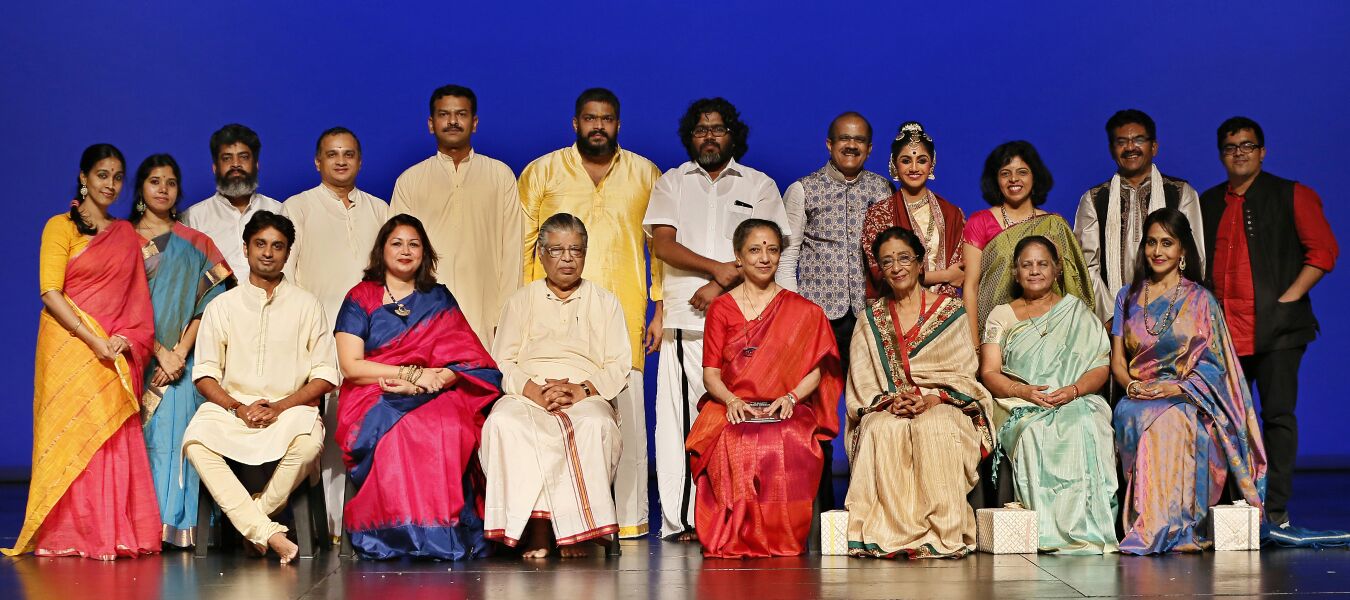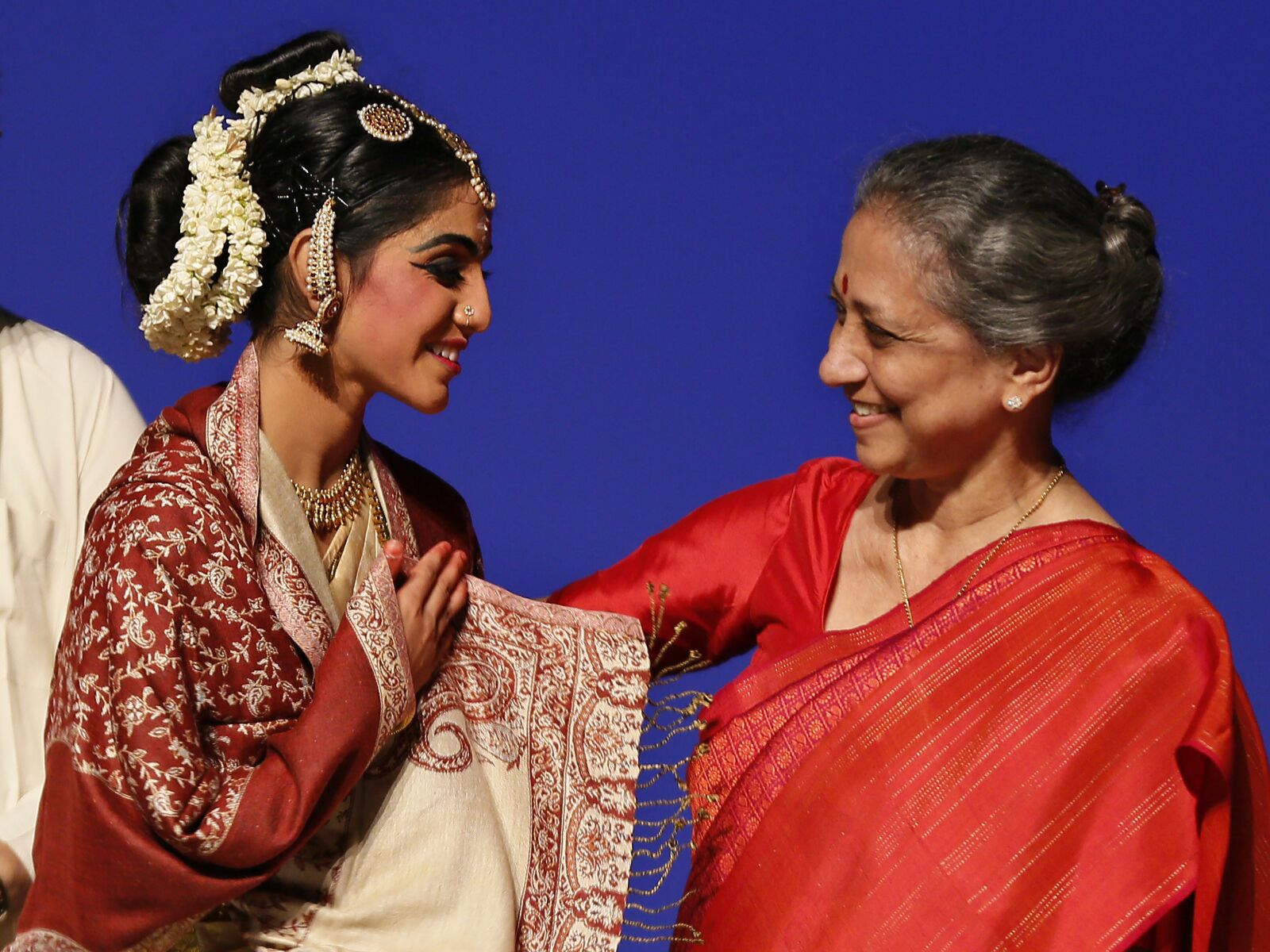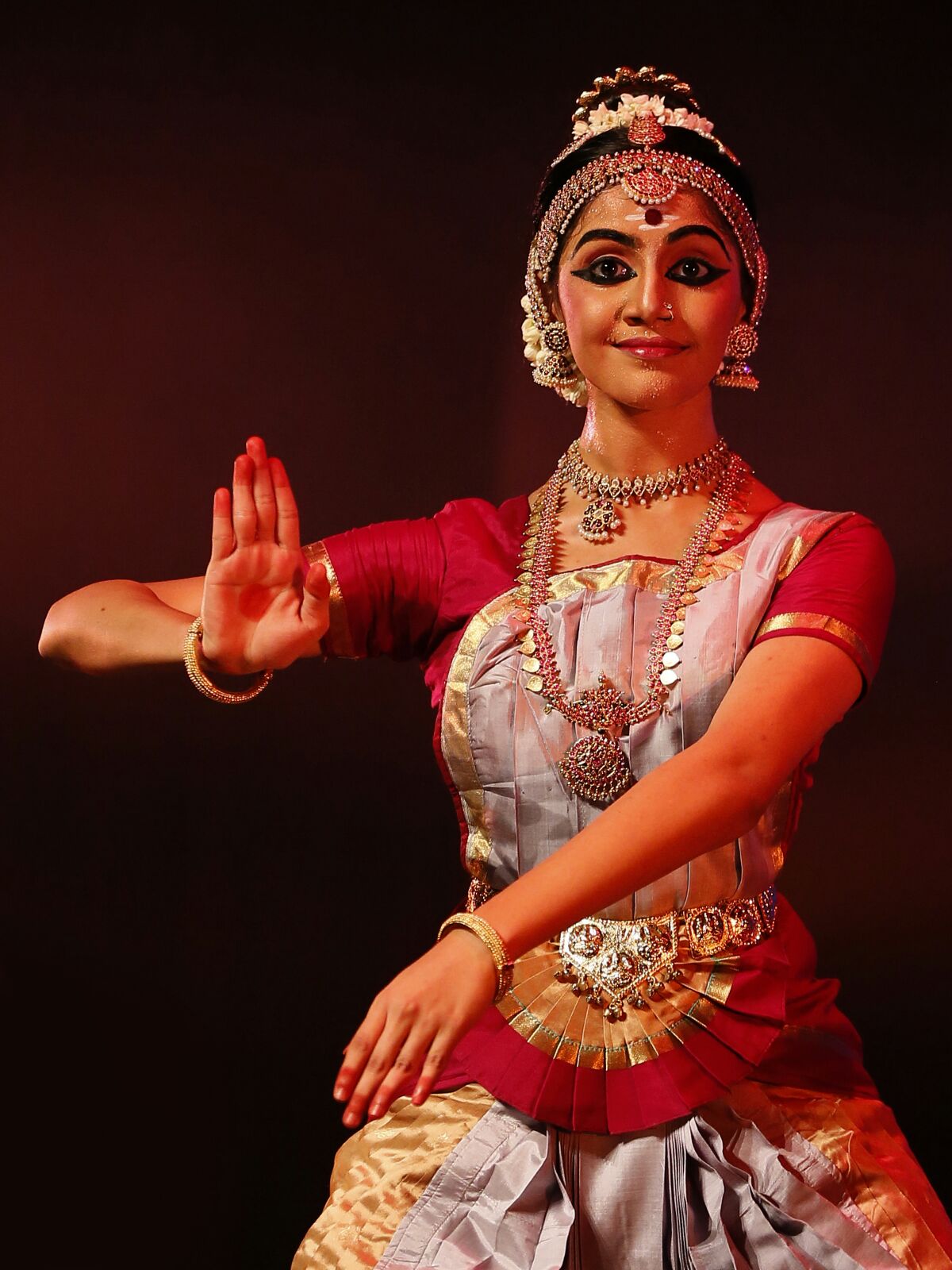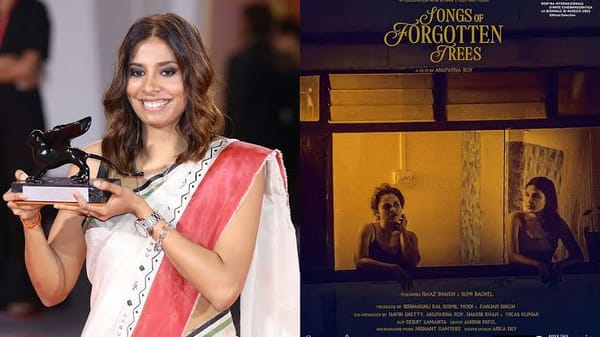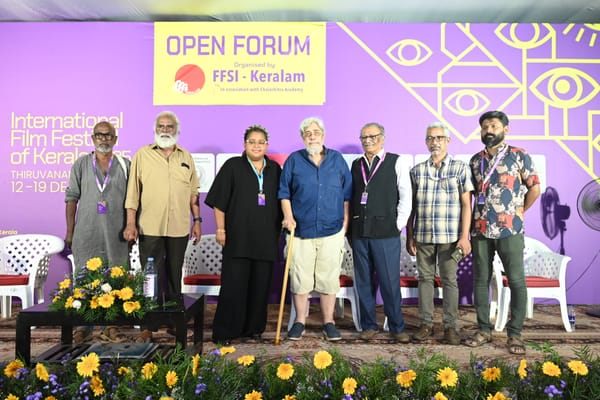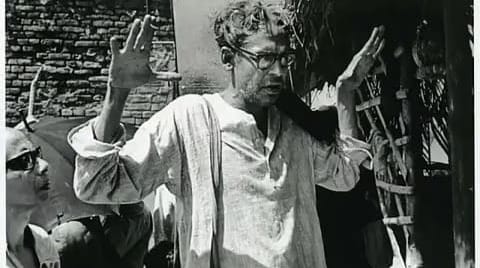A Rising Star
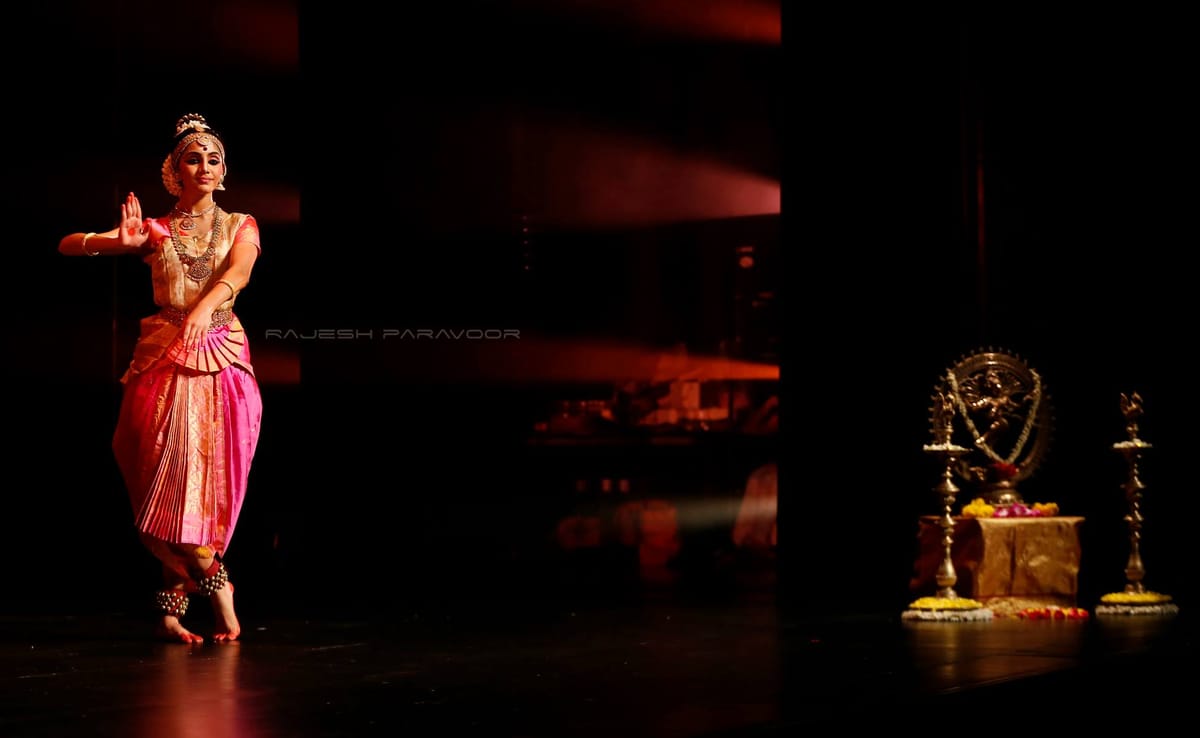
Victoria Theatre , one of Singapore’s oldest performing arts venues, was bursting at its seams with dancers, teachers, well-wishers and family for the Bharatanatyam Arangettam of Kshirja Govind, a disciple of Guru P N Vikas of the Singapore Indian Fine Arts Society. Expectations were high as the 16 year old was a familiar figure at most venues, both in Singapore and India and had gathered accolades beyond her age.
Revolving around the concept of Sanaathanam, or Eternal Way of Living, the earliest mention of which is found in the Rig Veda, the dancer began her exploratory journey with an introductory piece which sought to explain the origin of consciousness through the most sacred syllable in Hindu philosophy, Aum. The stage was set for the journey forward with the beginning of life.
Consciousness then manifests outward as space, air, fire, water and earth or the Pancha Bhutas. The audience was given a glimpse of the brilliance in choreography in this piece which was defined by the technical framework of the Alarippu. Never deviating from the traditional yet bold enough to explore, the Pancha Sandhi Alarippu in Ragamalika and Taalamaalika portrayed the Lord as the creator as well as the creation. It also explored the symbolism of Nataraja - as the creator, protector, destroyer, binder and releaser through the Markandeya story.
The Varnam, or the main piece of a Bharatanatyam repertoire, went on to establish the concept of Sanaathanam through the family of Lord Shiva, who is the embodiment of consciousness. Adi Shankaracharya in Atmashtakam composed over a thousand years ago, says, chidananda rupah shivo’ham shivo’ham Roughly translated it means,
I am the form of consciousness and bliss,
I am the eternal Shiva…
The union of Shiva and Shakthi, results in the union of consciousness and energy or the formless and the formed, one incomplete without the other. The seemingly disparate elements in Lord Shiva’s family, their children Ganesh and Muruga, together with their vehicles are portrayed as an example which we could all follow to achieve harmony in our lives.
The padam, centred on Meenakshi of Madurai reinforced the power of love to bind life forms. Extracting every inch from the dancer, in terms of expression and emotion, Kshirja alternated between the fierceness of the warrior queen and the coyness when she sets her sight on Lord Shiva with ease and grace. It was indeed a sight for sore eyes ! The Kurathi or gypsy dance, served as a message to all humankind. The sanchaaris delineated the discord and tension that characterise most relationships nowadays. The world seems to have to come to a point where the wisdom of the sages seems more relevant than ever. Kshirja concluded with a Thillana which also brought in novelty by its combination with a bhajan which wished peace to the whole world and emphasised the values of universal brotherhood and the importance of families in establishing and maintaining peace.
What set this Arangettam apart for me was the courage the mother-daughter team, along with her guru showed in deviating from the accepted norm. Having seen Kshirja Govind perform on many stages, I am fully confident that had she chosen traditional compositions, she could have carried them off with panache. She dared step out from her comfort zone and rose up to the challenge.
A theme based Arangettam within the framework of a Margam is a novelty to the Singapore dance scene. While there have been group productions, to shoulder the responsibility of conveying such a weighty message through completely new pieces was a risk for a 16 year old. However, the seed of the idea which germinated in Mrs Jayashree Govind’s mind took beautiful shape through Guru P N Vikas’ choreography and Kshirja’s execution. Demanding the fullest in terms of intricate footwork and expressiveness, the choreographer did not leave a stone unturned to utilise Kshirja’s talent and potential to the fullest. Each adavu was finished to perfection, each emotion flitted across her expressive face moving the audience to experience rasa, bhava and abhinaya.Victoria Theatre offers much in terms of lighting and this added dramatic quality to each piece.
Acclaimed danseuse and Padmashri Award winner conferred by the Govt of India, Leela Samson, graced the occasion as the Guest of Honor. Joining her to witness the dance debut was perhaps the Who is Who of the dance fraternity of Singapore- cultural medallion winner Shantha Bhaskar, Dr Uma Rajan, Shantha Ratii, Dr Siri Rama, Chitra Shankar to name a few.
The Govind family, along with the SIFAS family, one can dare say is a true embodiment of the message that the dancer wanted to convey. Balancing each other’s weaknesses and strengths, the musicians, the technicians, family and friends worked together to make Kshirja Govind’s Arangettam a successful one.
The world of dance will definitely see more of her in the days to come as Kshirja is born to dance!
Review by: ASHA VARMA
